Textile Interfaces
E-Textile Tester

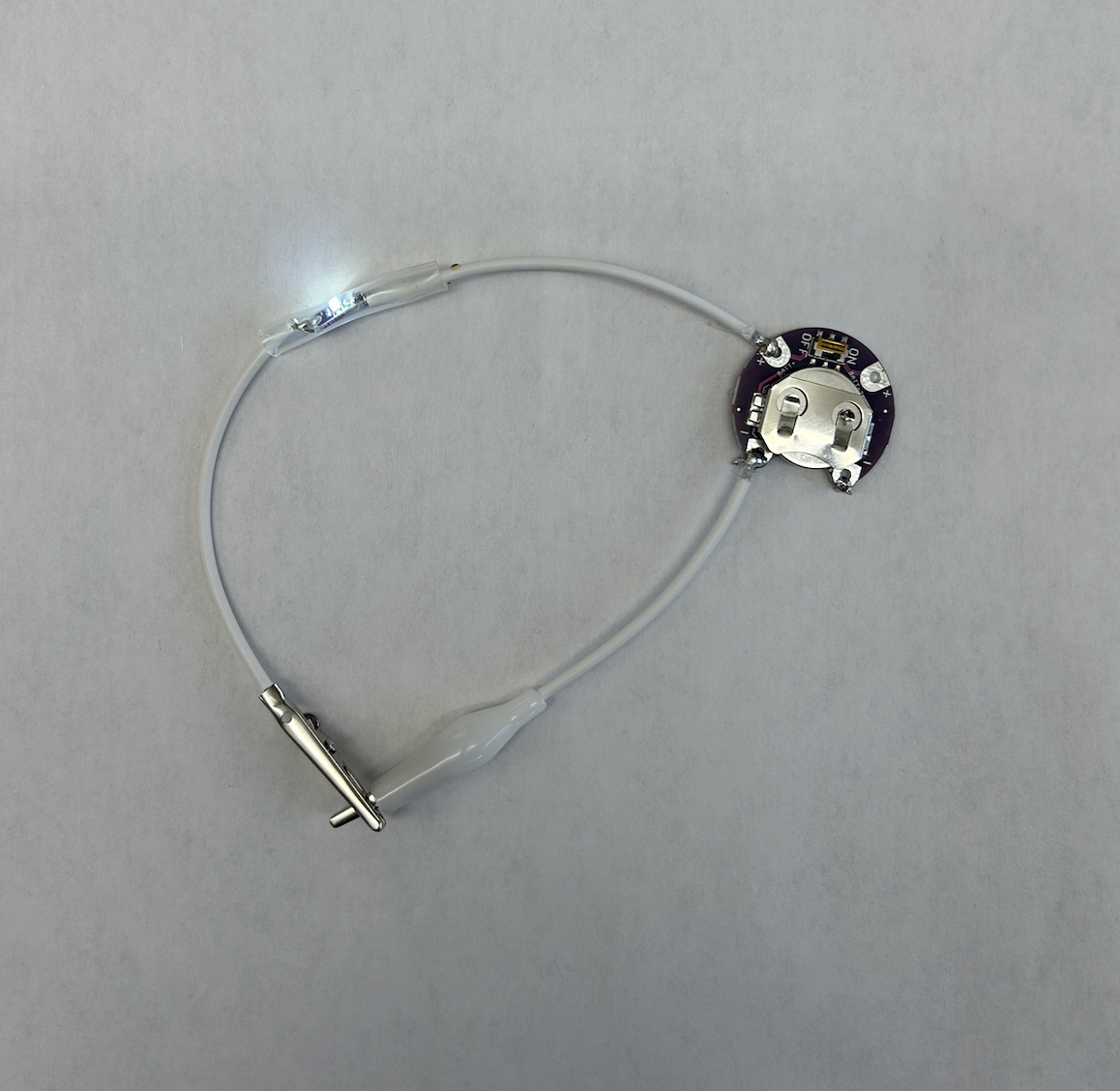

High Five Gloves
I made my gloves kiki & bouba. First I cut out the two shapes from conductive fabric, and then cut one in half. I ironed both on to pieces of felt and sewed conductive thread from battery --> LED, LED --> one half of the shape, and batter --> other half of the shape.

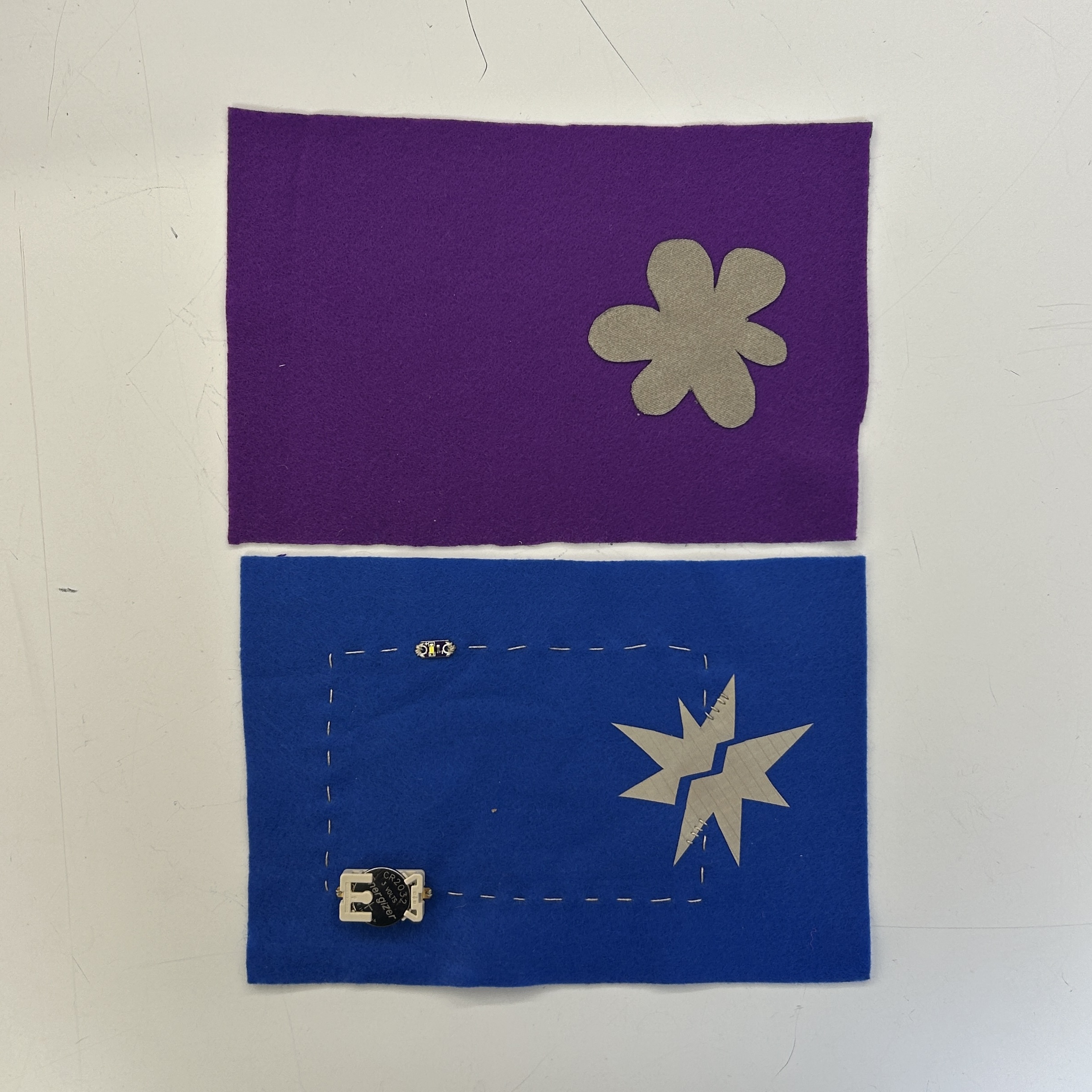
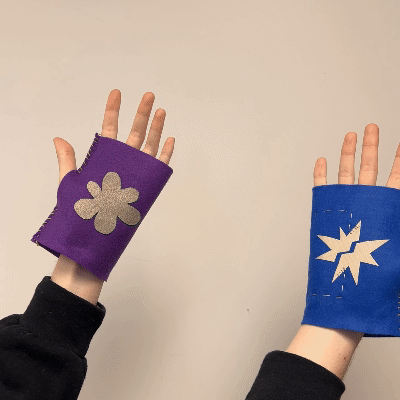
Digital Switch #1

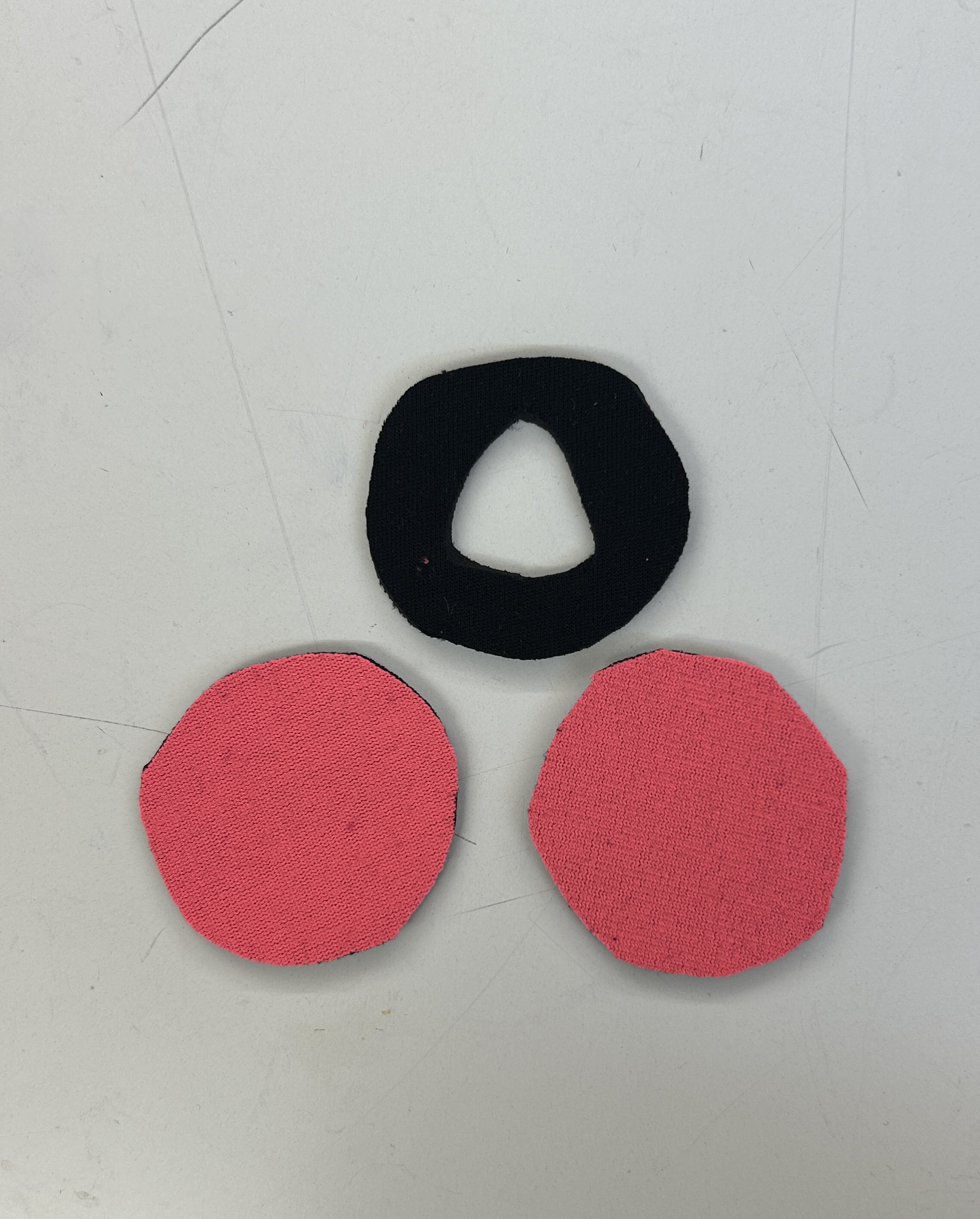
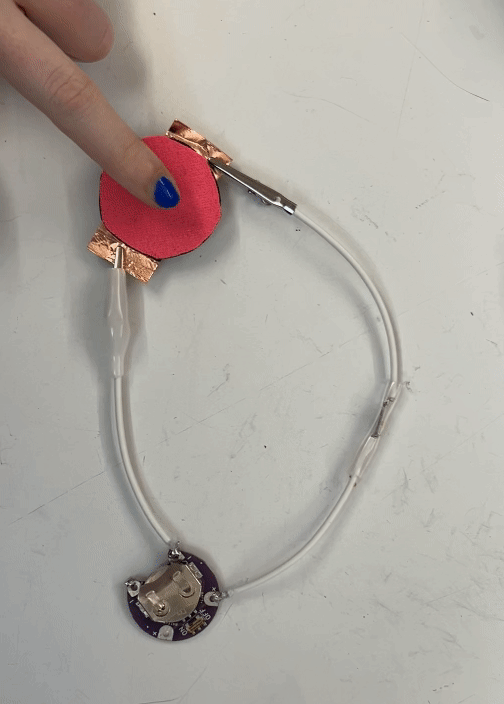
Digital Switch #2
I wanted to make one that looked a little better, so I went back to my roots and made another sandwich-themed project. I used industrial felt for the bread and regular felt for the lettuce, ham, and cheese. The layers are: bread, ham, cheese, conductive fabric, lettuce (with a hole cut out), conductive fabric, bread. Yum.



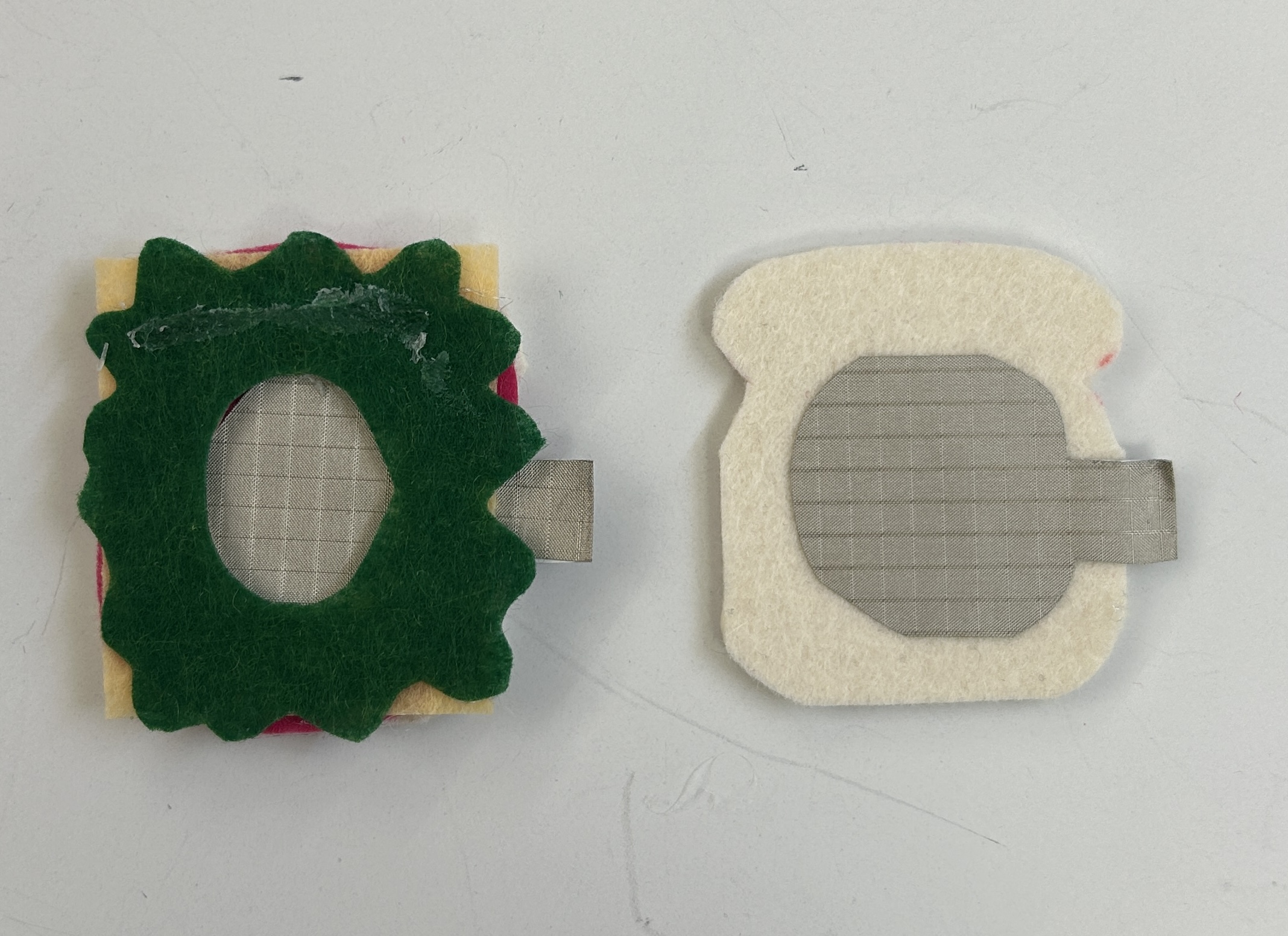
Multiple Switches with Shared Ground



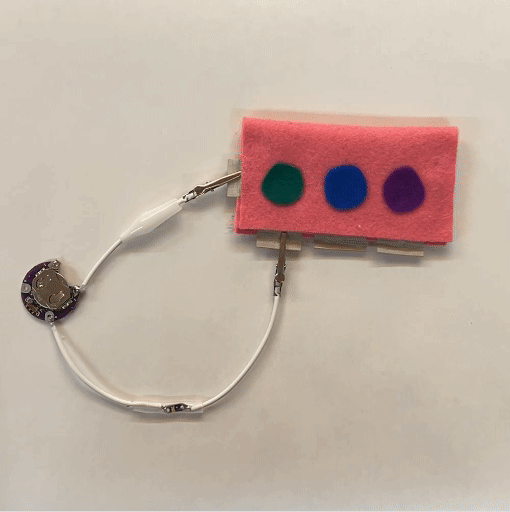
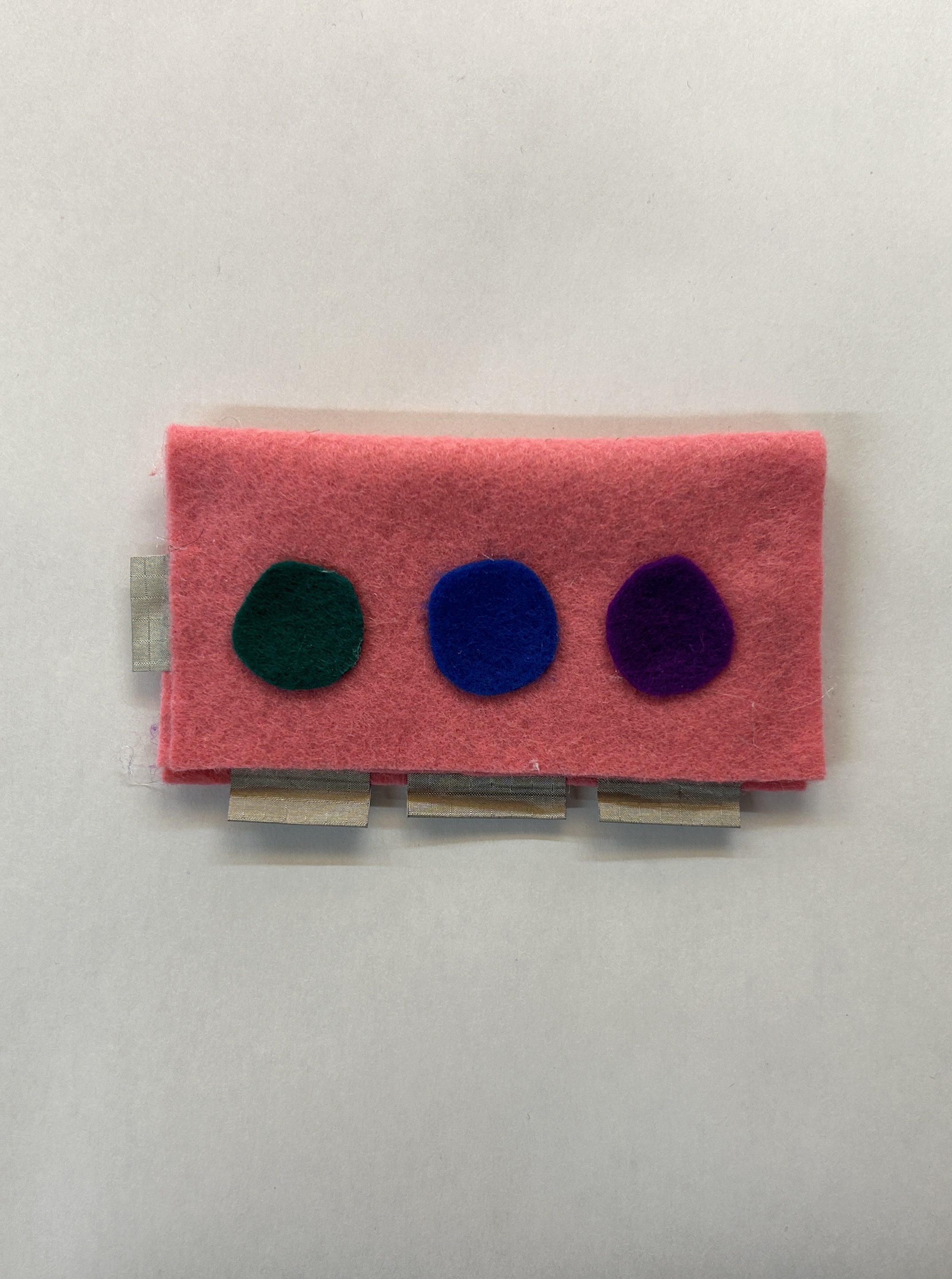
Analog Pressure Sensor

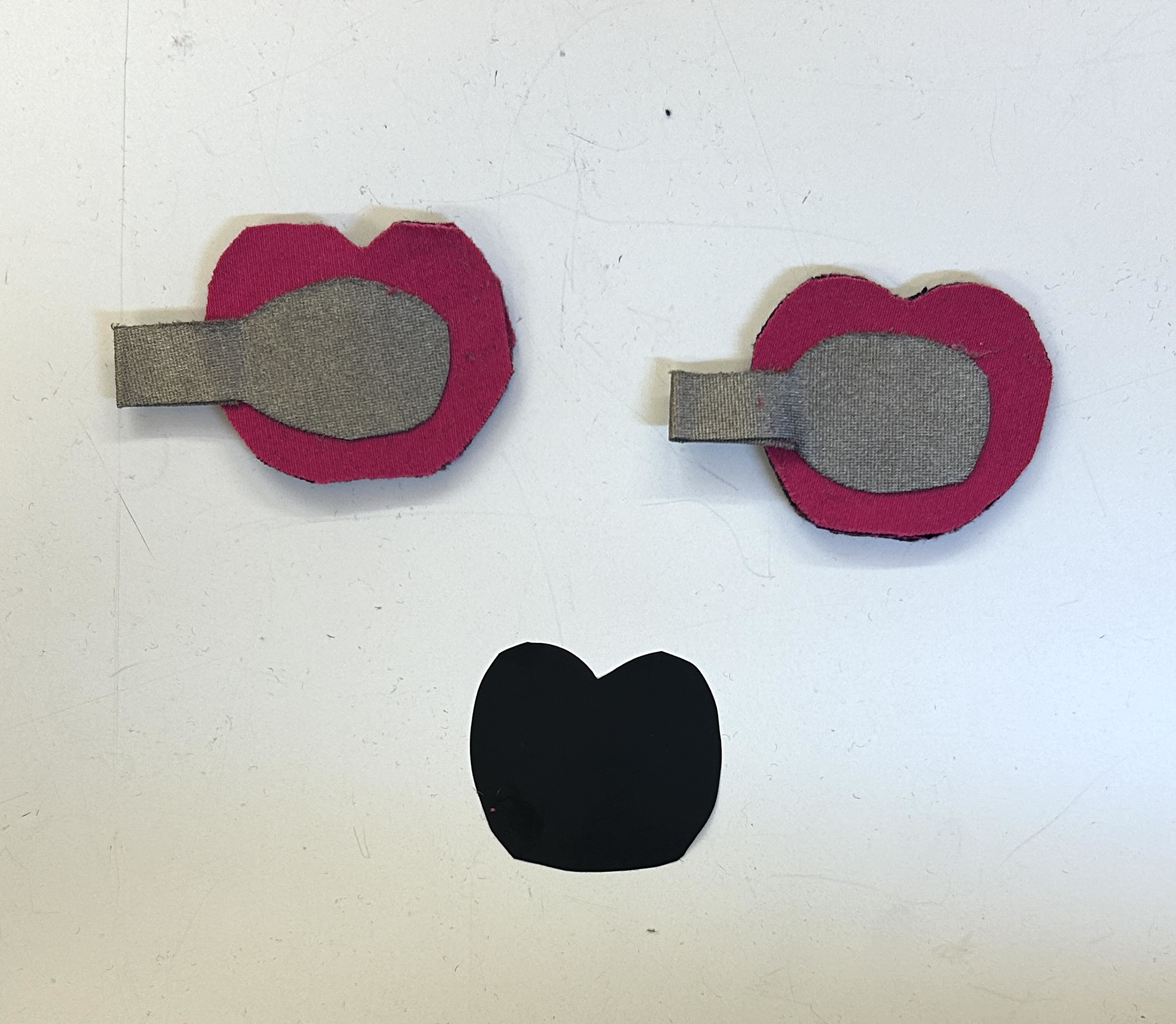
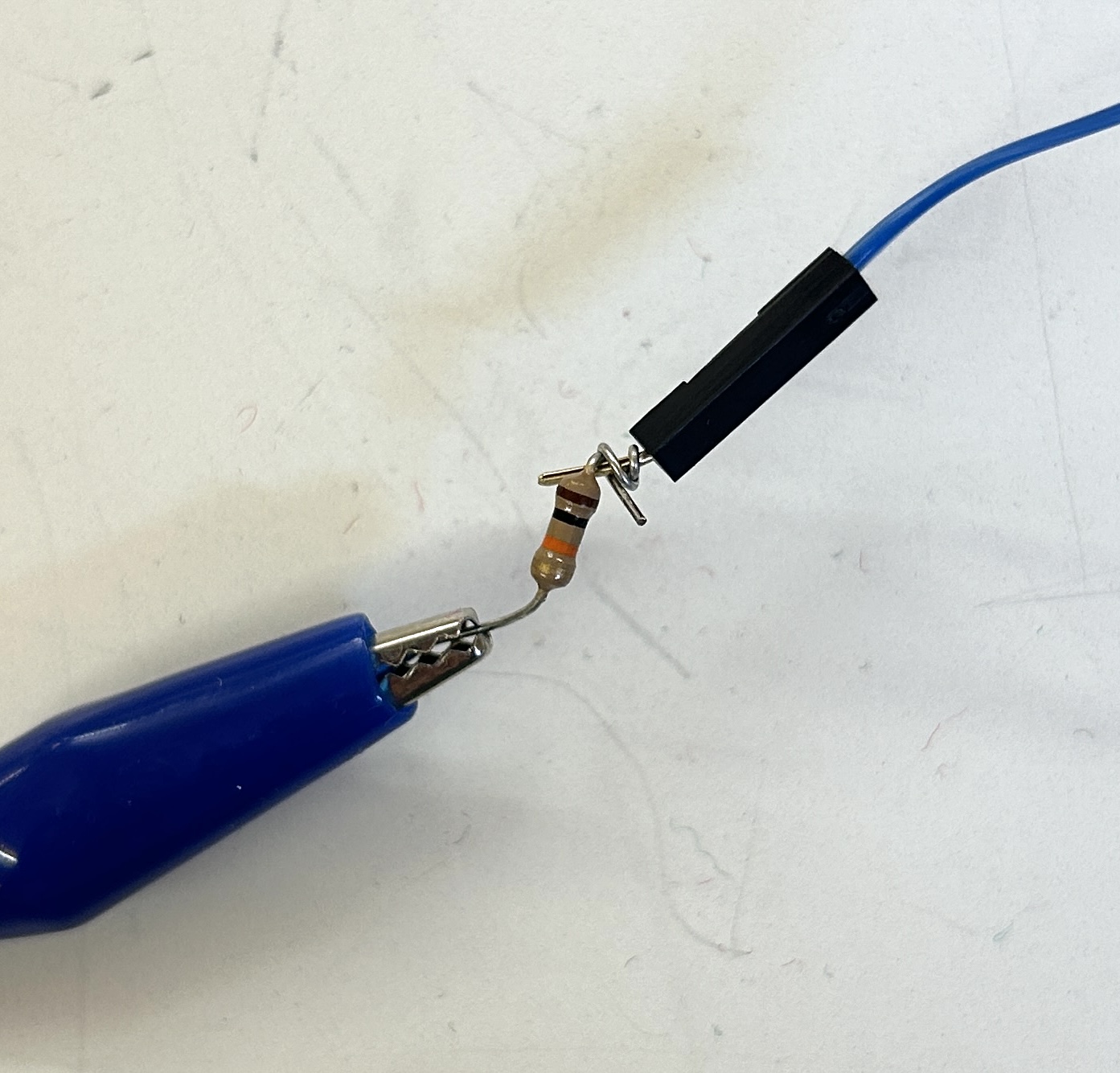
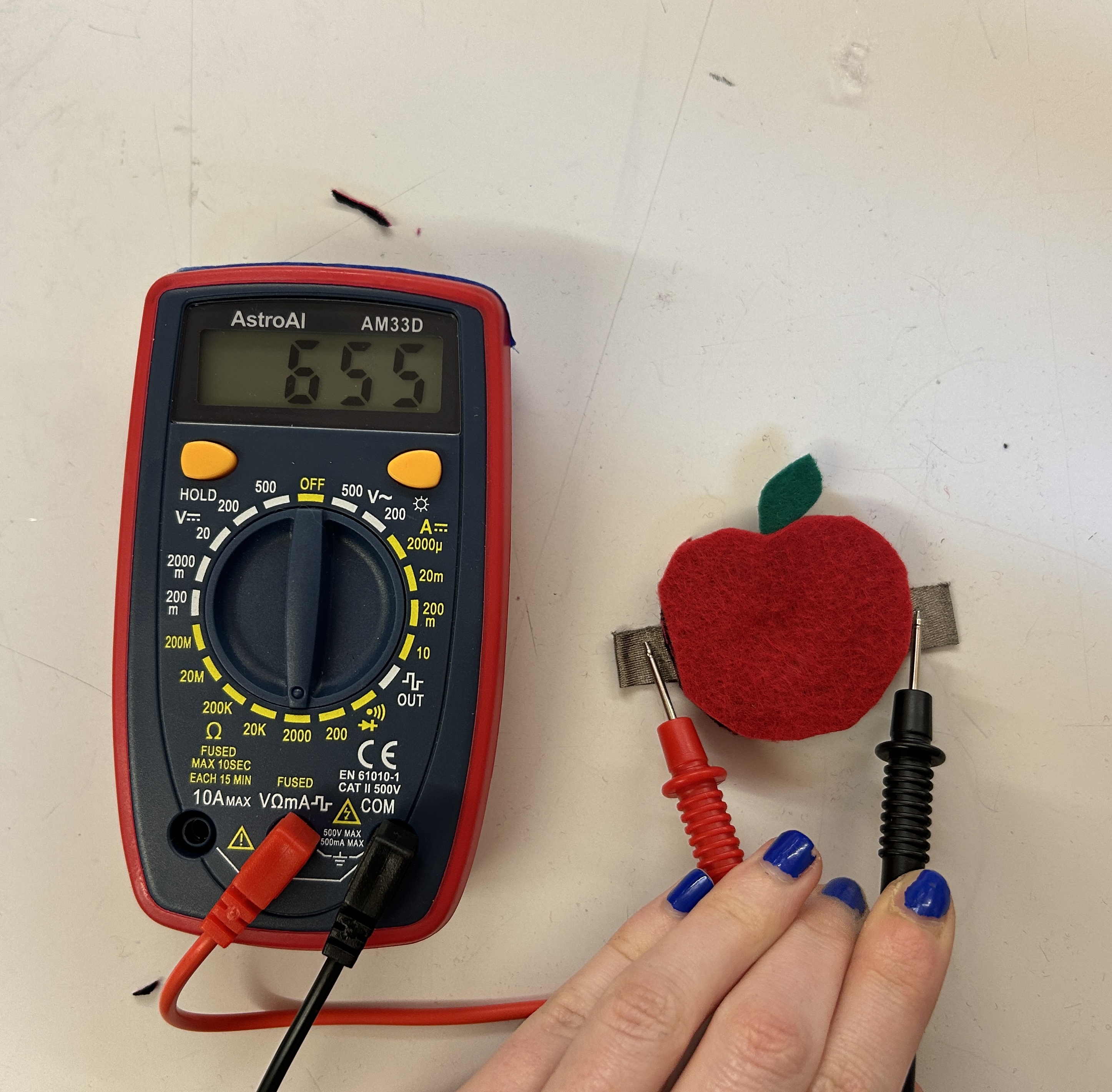

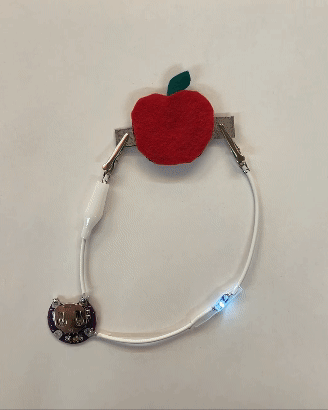
Textile Game Controller: Fruit Smash
For my game controller, I wanted to challenge myself to make buttons that were not just soft, but also squishy (like a pillow!). I went with the food theme and decided to make an apple and a banana.
Marerials: felt, conductive fabric, conductive stainless steel wool (I don’t remember what it’s called), hot glue, cotton fill.
I decided to use non-conductive cotton fill mixed with conductive wool to create the squishy interior, to act like velostat between two pieces of conductive fabric. Both of my buttons are analog pressure sensors.
Banana
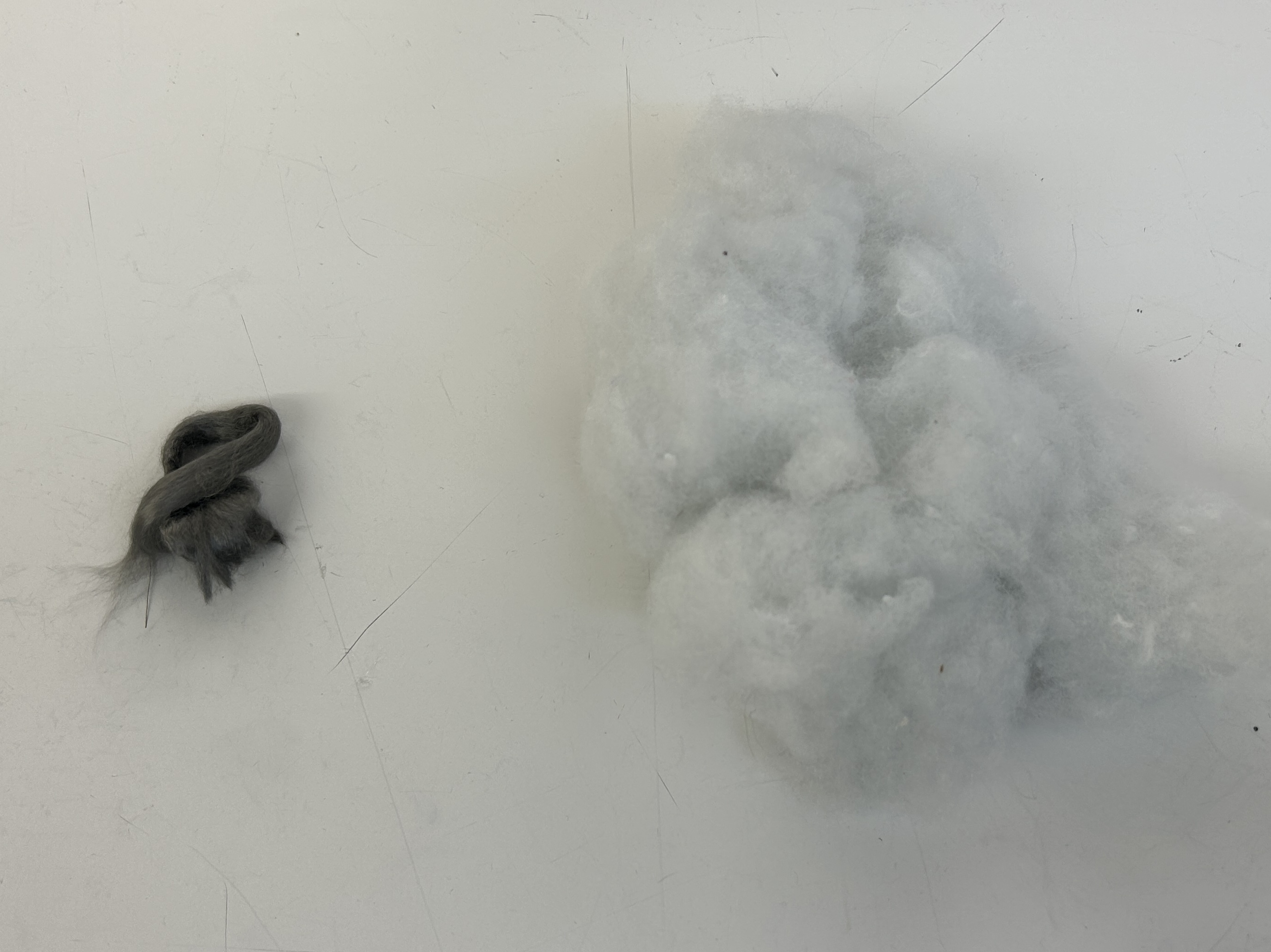
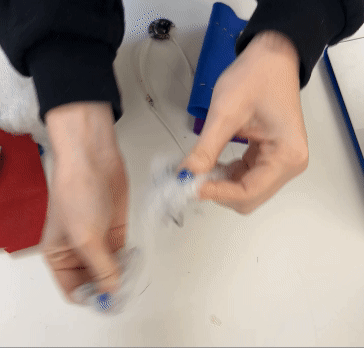
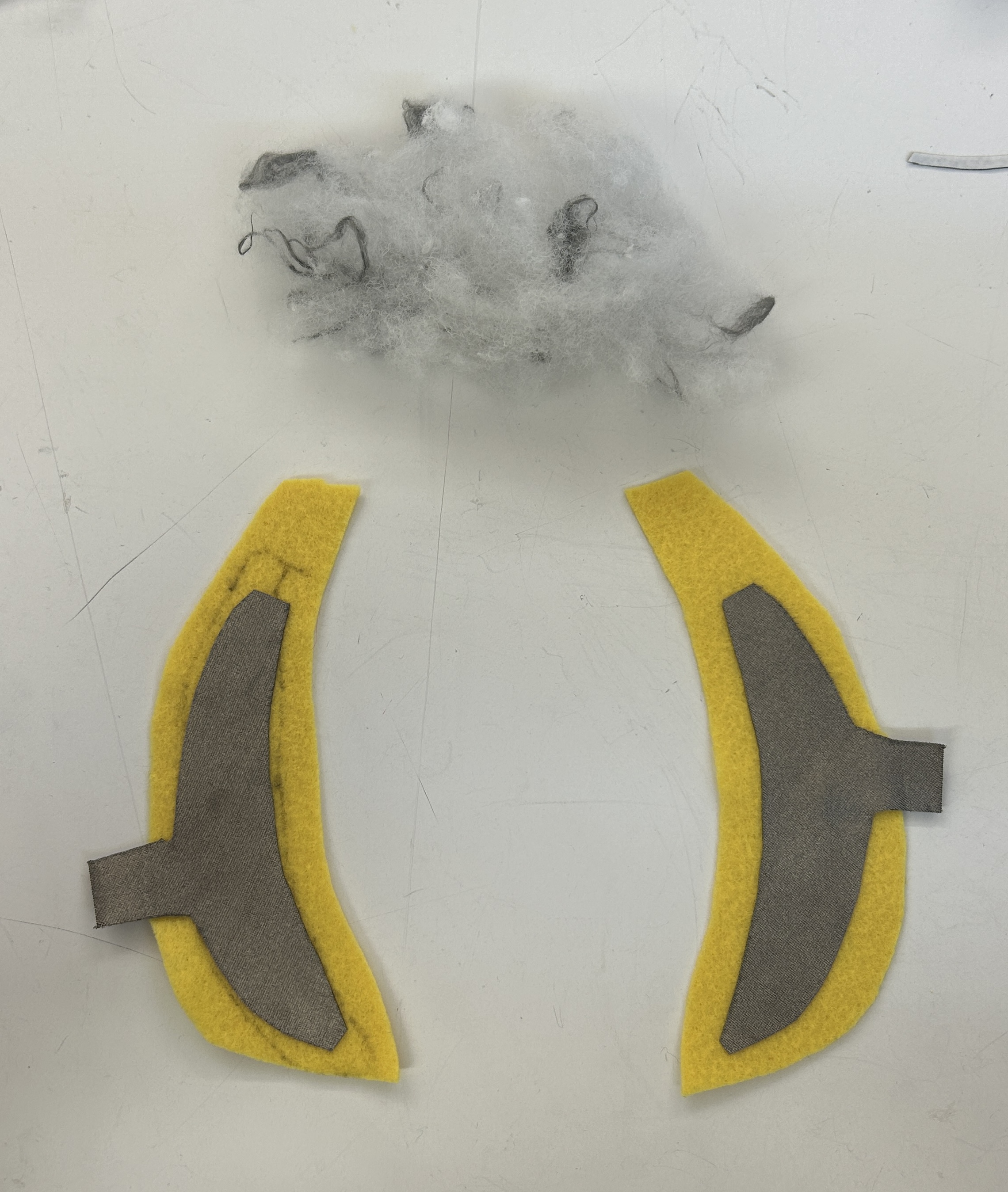
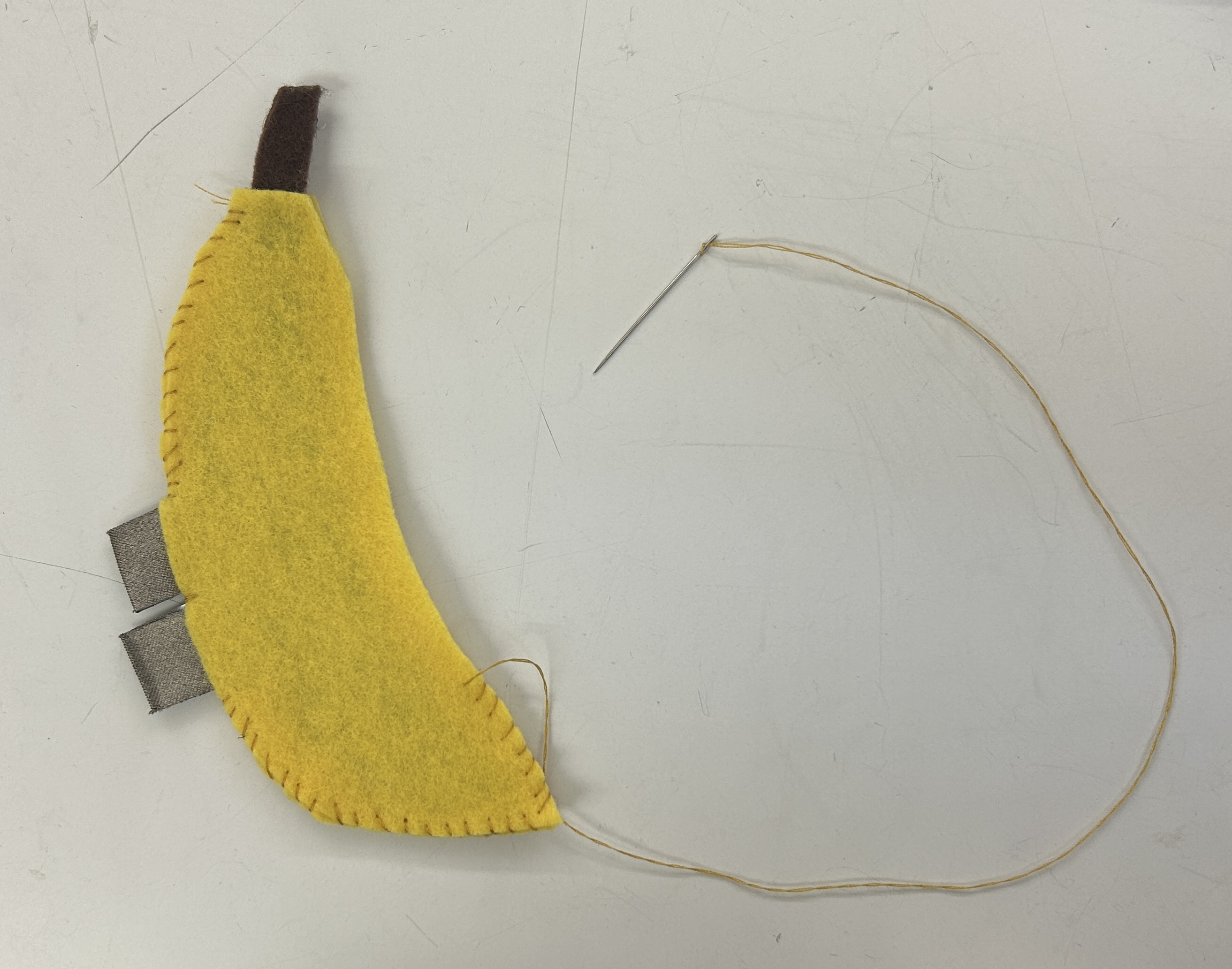
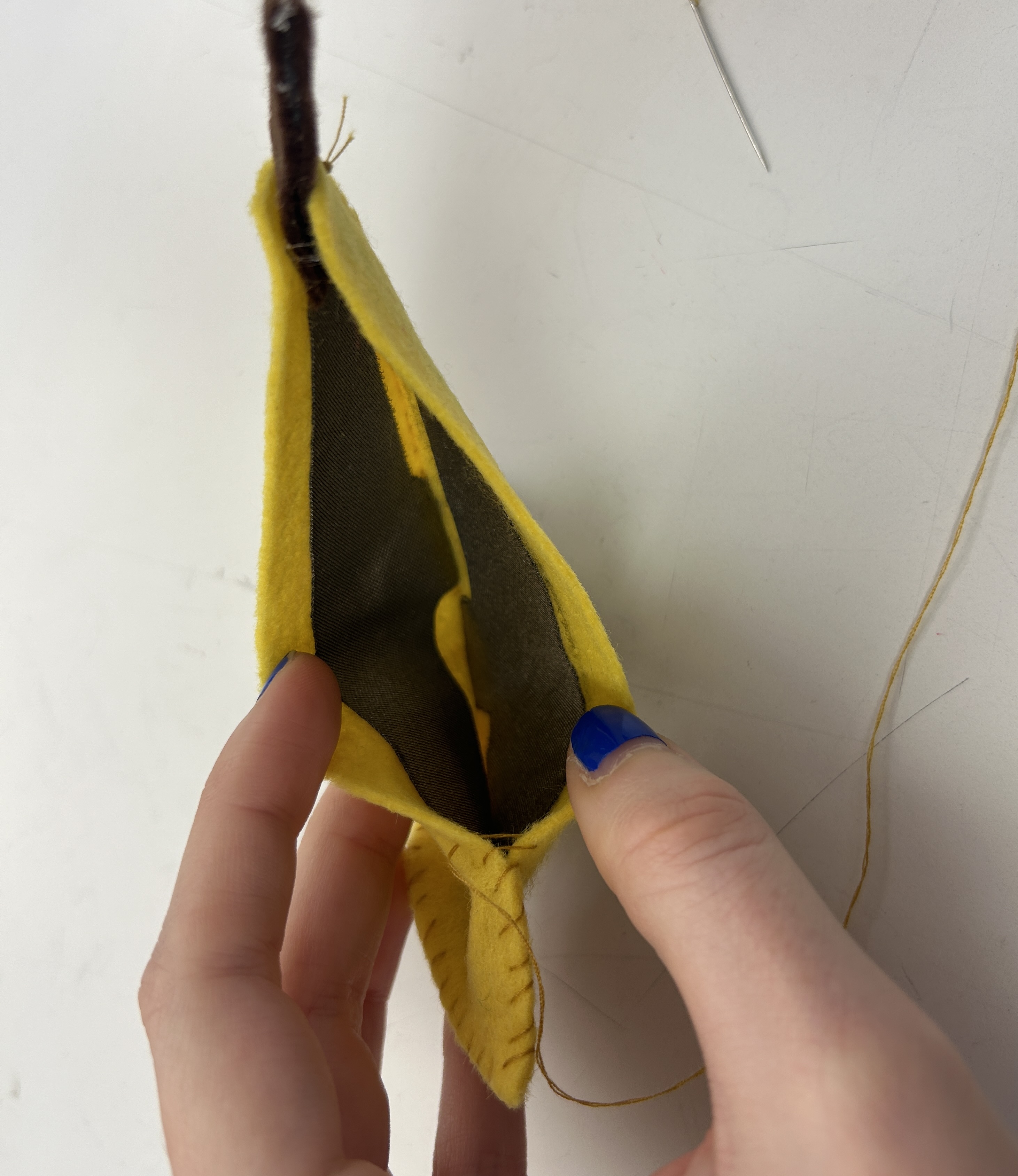
Apple
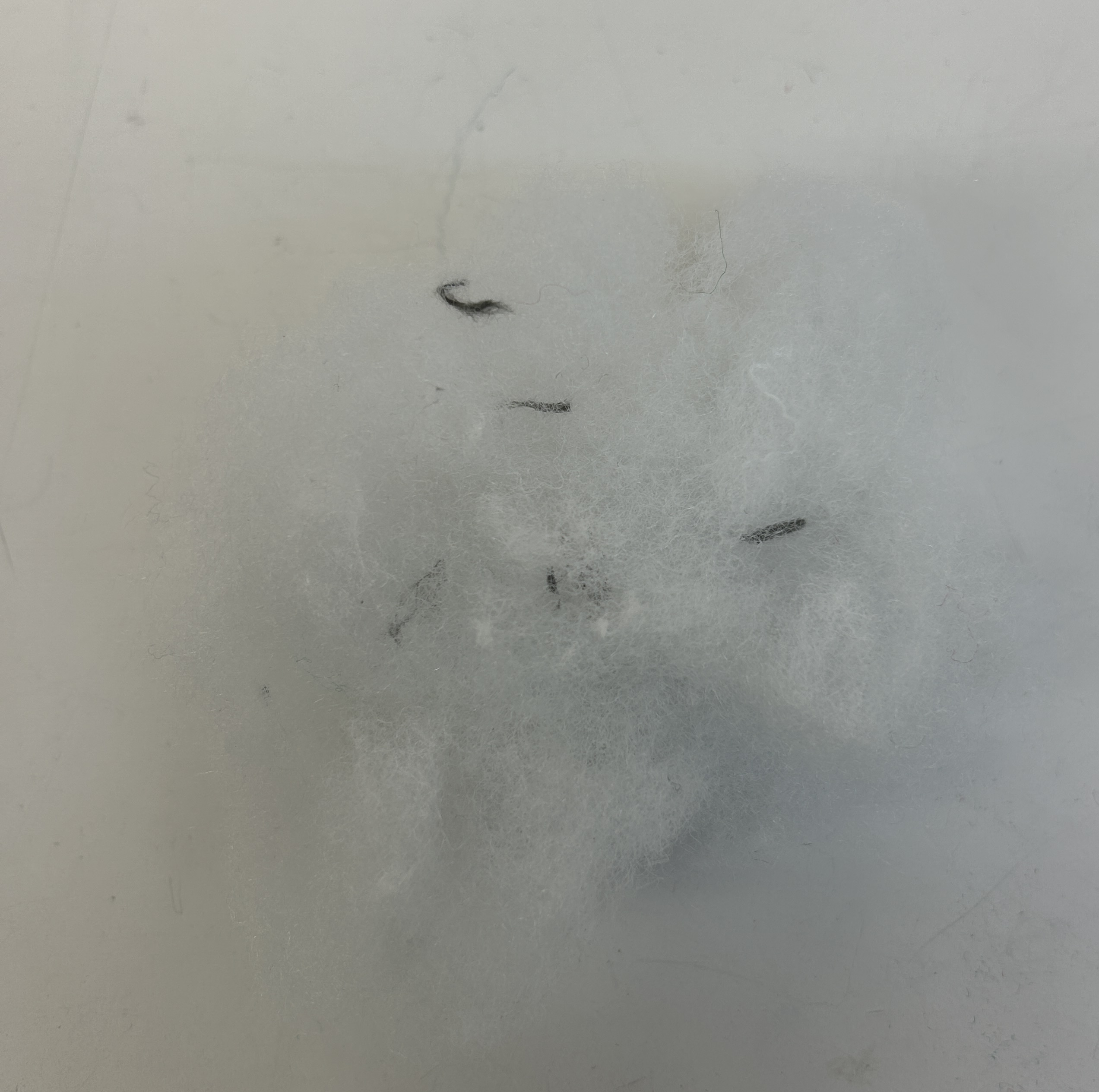
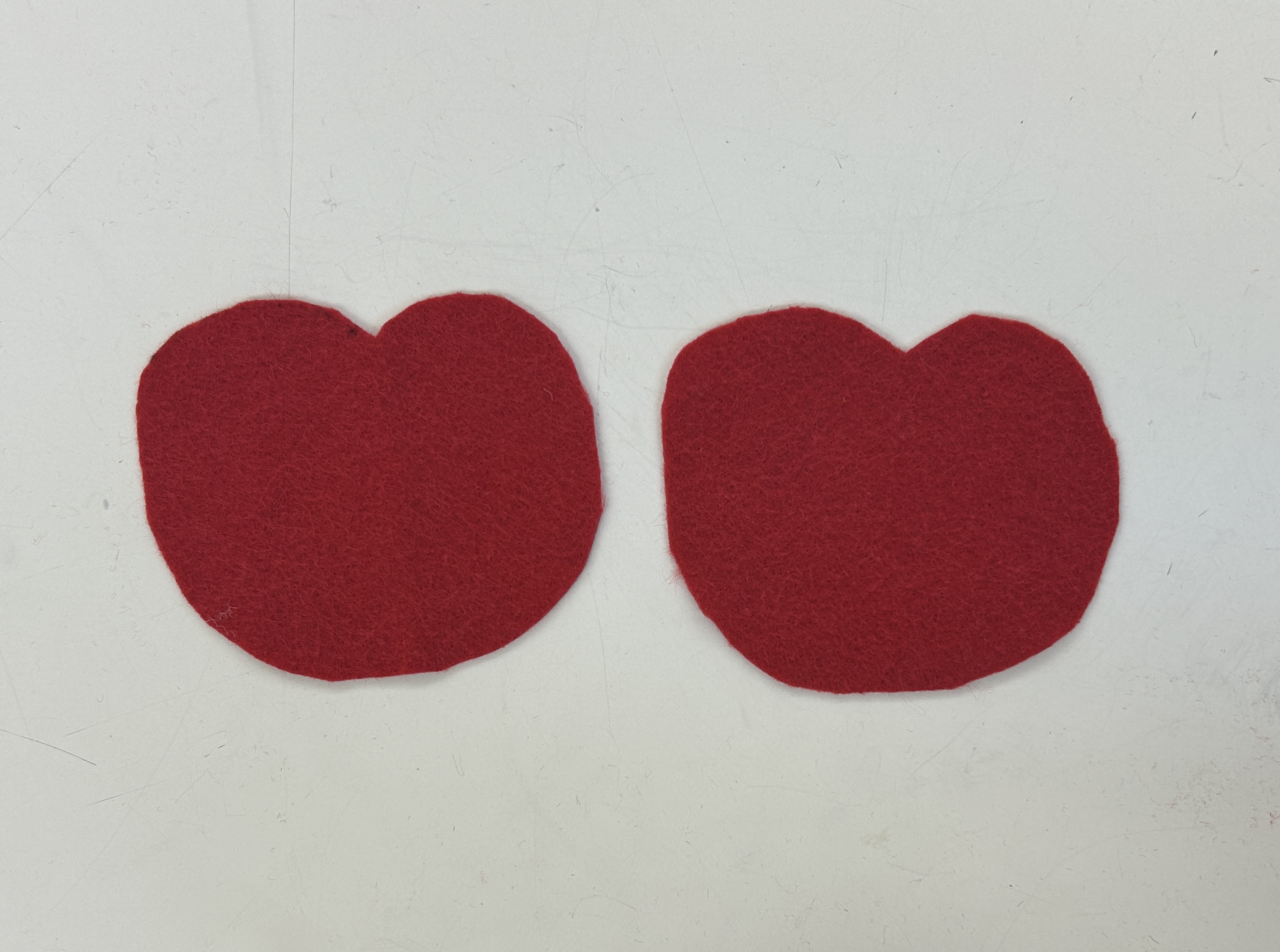
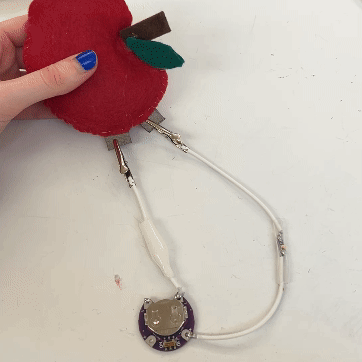
I didn’t document much of the process of making the apple button because I was so pressed for time. Unfortunately, neither button worked in class because there was too much conductive material in the stuffing. After class, I remade both buttons with a different ratio of conductive material to cotton fill. This took a lot of trial and error - and sewing up the sides of each button would result in the stuffing moving around, changing how well they worked. I did get both to work, but they were slightly unpredictable (pressing the same area would only sometimes result in a valid button press in the serial monitor). I played around with the threshold but it still didn’t work perfectly.
Although I like how they look and feel, they aren’t super effective as game controllers. In the future, I’d want to find a way to create a conductive stuffing that has a uniform ratio of conductive to non-conductive material so the readings can be more reliable. Or, abandon the conductive stuffing altogether and experiment with new ways of making squishy buttons with other soft materials.

